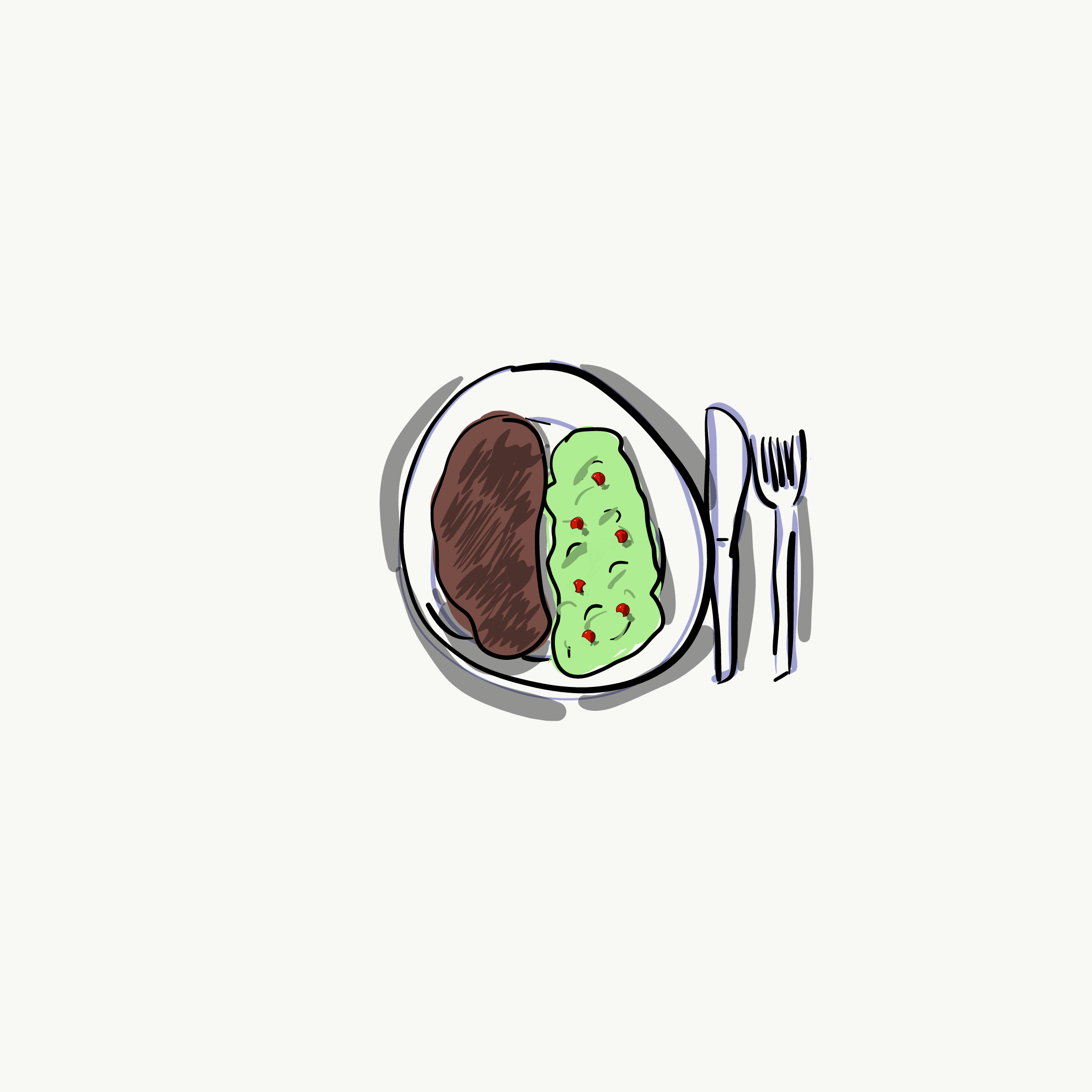5 min read
I've been slowly tweaking my diet over time and I think it's at the point where it can help others, so here it is.
Since I've been on this diet, I've:
- Simplified my life
- Lost fat
- Built muscle
- Had high energy
- Enjoyed food
- Felt full
This is the result of me researching and experimenting with nutrition my whole adult life!
Protein and Fibre
At the core of the diet is two macronutrients, protein and fibre. Every meal is centred around your plate being half protein, half fibre.
What this means is that every meal is half meat, half fibrous vegetables. Some common meals I eat are:
- Steak and blanched veggies (one or more of broccoli, brussels sprouts, green beans)
- Chicken breast and salad (With whatever toppings you need, ex: olive oil, balsamic vinegar, cheese, etc)
- Beef Stew (w/ carrots, no potatoes)
- Pan fried pork tenderloin and blanched veggies (I'm a big fan of blanched veggies)
- Tuna and salad
- Scrambled Eggs
I hope you see the theme there. Just pick any meat and any veg, make them delicious, and eat them together!
Half Plate Meat + Half Plate Veg = Protein-Fibre Meal

Eat More
Since there are fewer calorie-dense carbohydrates in this diet, you need to eat a lot more food than before to make up for it. Just eat more of equal sized servings of protein and fibre. I tend to eat two plates (half protein, half fibre) of food per meal.
Drink Lots of Water
Sometimes, when you think you're hungry, you're actually thirsty. Drink a ton of water every day. I'm talking at least 3 litres, ideally closer to 5. Just be sipping water all day. It's simple and satisfying.
Cheat Once a Week
For some reason, it's easier to keep this up if you eat whatever you want once a week. I use Saturdays for social and societal reasons. If you crave something during the week, don't think "I can't have this." Think, "I can have this on Saturday."
No Exercise
It's a myth that you need exercise to lose fat, and I don't recommend doing any extra exercise beyond what you already do as a part of your normal life. Changing your activity levels will mess around with your hunger and give you unpredictable results. Worse, extra exercise will add more effort to your journey to health when the diet will provide better results on its own.
The only exception to this rule is if you're lifting weights. Any other form of extra exercise is not recommended.
Get Started!
That's all you need to get started with the Protein-Fibre diet! Read on for some sciencey ideas behind the diet, or go fry up a steak and toss a salad to get started.
Science for Nerds
Calories and Satiety
On the protein fibre diet, you are eating the two most hunger satisfying (satiating) macronutrients. Because of this, it is virtually impossible to eat too many calories on protein and fibre — you get full before you can eat too much.
Insulin
Insulin is the fat storage hormone. Its presence signals your body to store blood glucose and fat as body fat.
Fibre blunts insulin response and protein has a net neutral insulin response. You'll never be signaling to your body to store fat. In fact, you'll be producing the anti-insulin, glucagon, which signals to your body to burn bodyfat and use it as energy.
Cheat Day
Ghrelin
Cheat day once a week regulates your ghrelin (your hunger hormone) response. Carbohydrates seem to uniquely control ghrelin so it's important to eat some once a week.
De Novo Lipogenesis
The thermic effect of carbohydrates is higher when your glycogen stores are full, meaning it costs calories to store those carbs as fat, through a process called de novo lipogenesis. So your 4 calorie per gram carbohydrate ends up being close to 3 calories per carbohydrate when storing as fat. A great reason to binge once in a while vs snacking here and there — Your body seems to prefer it.
Extras
If you're looking to go above and beyond, I recommend looking into two more impactful things: Intermittent Fasting and Strength Training.
Learn about Intermittent Fasting in James Clear's The Beginner's Guide to Intermittent Fasting.
The best Strength Training program I've ever done is Martin Berkhran's Reverse Pyramid Training .